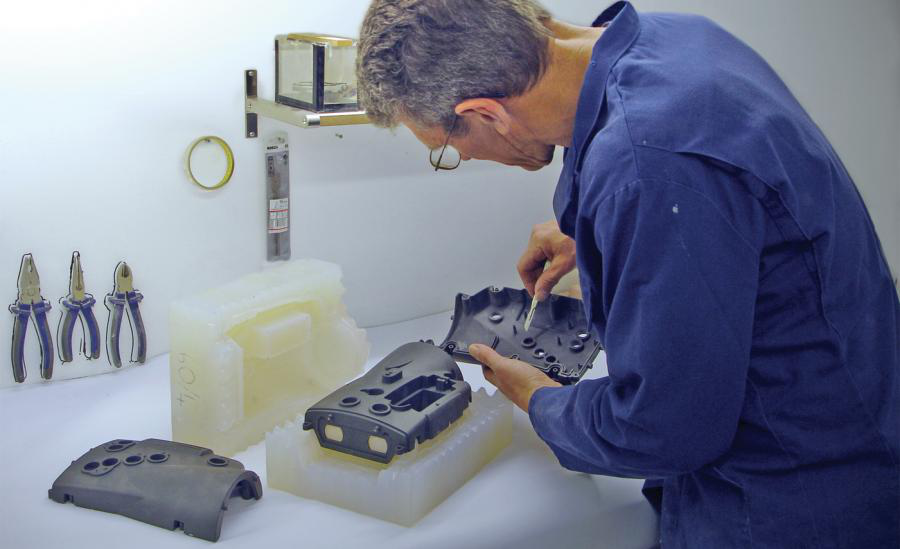Vacuum casting is one of the best ways to create functional products made with high-end silicone. It’s known for being quick, inexpensive, and incredibly practical. As manufacturing methods go, vacuum casting is pretty helpful to bridge prototyping with injection molding. Most workshops begin the process using a design created using CAD/CAM technology to create a 3D printed model or a machined prototype depending on the type of tolerances required by the part. This prototype is later used to create the mold that will be used to create the parts we need using a vacuum-like method of injection that can be controlled to create diverse textures.

vacuum casting products*
Vacuum casting is considered by many a low-volume manufacturing method. Although it is very popular and easy to handle, it’s not widely used to create too many finished products. This is mainly because the molds used for vacuum casting don’t last very long since they are made of rubber or silicone. As you can guess, a mold for vacuum casting costs just a fraction of an actual steel mold, but large production runs are out of the question. Vacuum casting is excellent for people who want to create no more than ten or twenty units of the same part. Vacuum casting is also a suitable method to produce parts using only certain resins such as:
- Acrylonitrile butadiene styrene
- Polypropylene
- Polycarbonates
- Polymethyl methacrylate
- Polyoxymethylene
- Nylon polyamide
- Polyethylene
- Silicone rubber
- Most heat-resisting materials
The Long-term Benefits of Vacuum Casting Manufacturing
One of the most significant benefits of working with vacuum casting is that you no longer are restricted by the limitations of nearly every other method of manufacturing. Complex shapes and angles are no longer an issue like it is with CNC machining. The great additional benefit has to be the failure rate of vacuum casting, which is nearly zero when you create the proposed number of pieces you plan for the mold.
How Does Vacuum Casting Works?
Vacuum casting follows a very strict walkthrough to get done correctly, the following is a list o the steps that go in almost every single manufacturing project:
· We Create a Prototype
Using CAD/CAM software, we create 3D designs that can be processed by an SLA rapid prototyping machine or a 3D printer.
· Now We Create a Plastic Mold
Once we have our prototype in place, we’ll have to make a mold frame by encasing our prototype with silicon. The mold will be done after eight or ten hours of getting dried.
· We finish by Creating out Product
The vacuum casting procedure takes place when we pour liquid rubber in our silicon mold. We can do it using a nozzle or manually. The injection should be done with care to make sure all the fillings and corners of the mold get covered. After we are done, the product needs to be curated for at least one hour at different temperatures depending on the specs.
Vacuum casting it’s so easy to handle that a sole technician can do it in very little time. We can handle this procedure as well as others in our workshops at LTC Proto.
